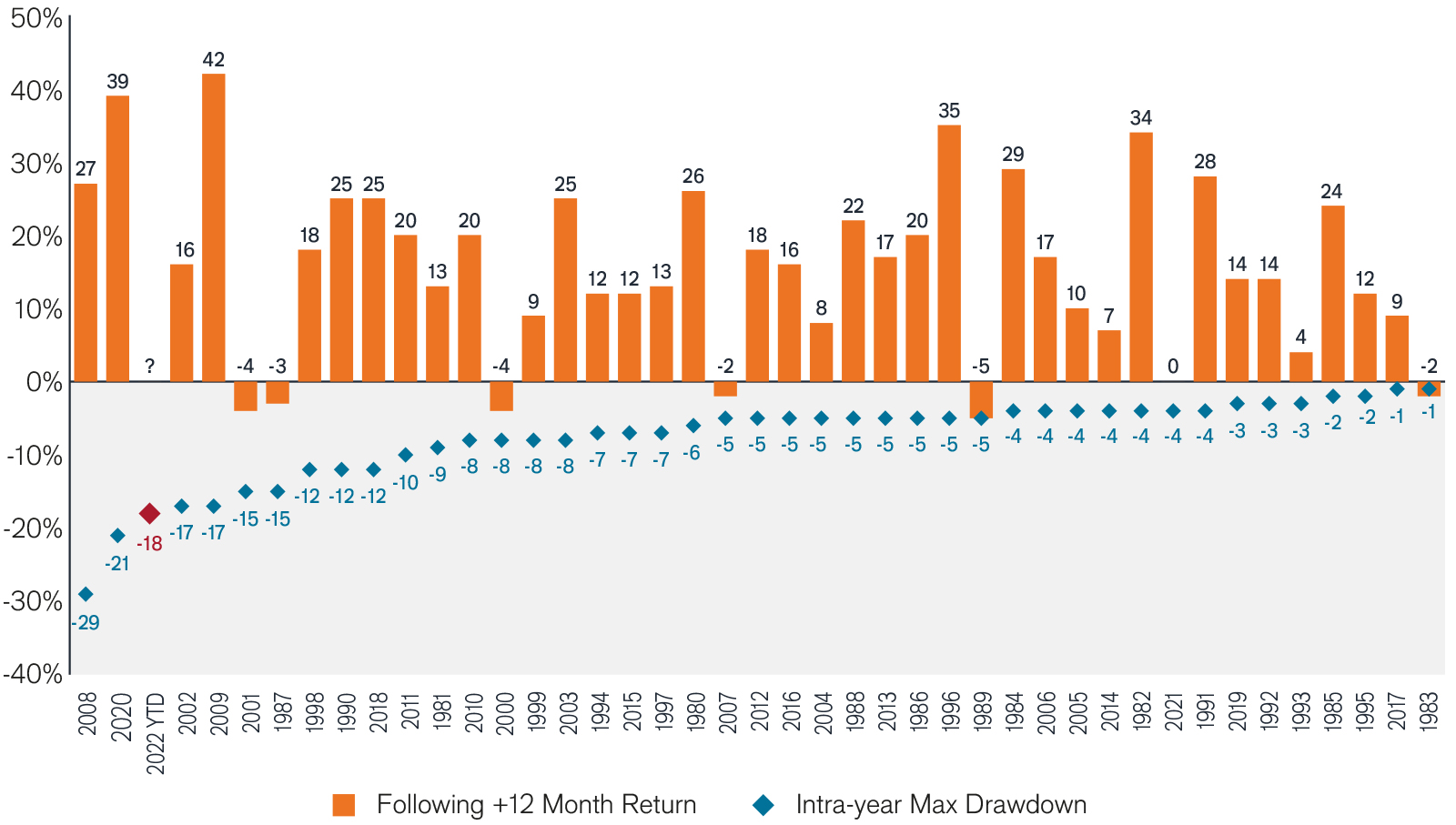Subscribe
Sign up for timely perspectives delivered to your inbox.
The Portfolio Construction and Strategy Team explain how a successful allocation to a balanced fund may help encourage investors to stay the course through volatility and avoid the temptation of market timing.

This article is part of the latest Trends and Opportunities report, which seeks to provide therapy for recent market shocks by offering long-term perspective and potential solutions.
A successful allocation to a balanced fund may help investors maneuver these difficult markets by encouraging them to stay the course and avoid the temptation of market timing.
Diversification and risk mitigation: The 60/40 portfolio historically experienced lower drawdowns and faster recoveries

Source: Bloomberg, Portfolio Construction and Strategy, as of 08/31/2022.
The 60/40 portfolio intra-year declines in perspective

Source: Morningstar, Portfolio Construction and Strategy, as of 08/31/2022.